5 tips to take homemade pasta to the next level
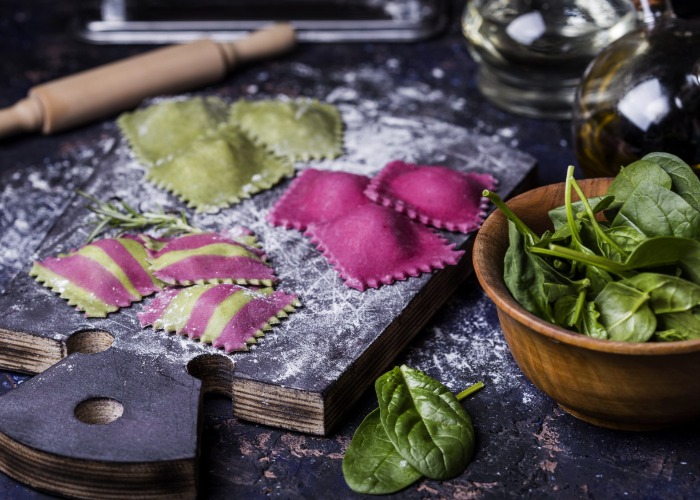
Producing silky-smooth fresh pasta is already pretty impressive but why not up the wow factor by introducing coloured doughs or some more showstopping stuffed shapes?
Are you already a dab hand with a pasta machine? Do you think nothing of knocking up a batch of fresh tagliatelle for a weeknight supper? Are friends and family wowed by your talent for tortellini?
Making sheets of silky-smooth fresh pasta is already pretty impressive, but if you’re willing to put in a little extra effort you can really up the wow factor. Here are a few ideas to try.
1. Coloured doughs
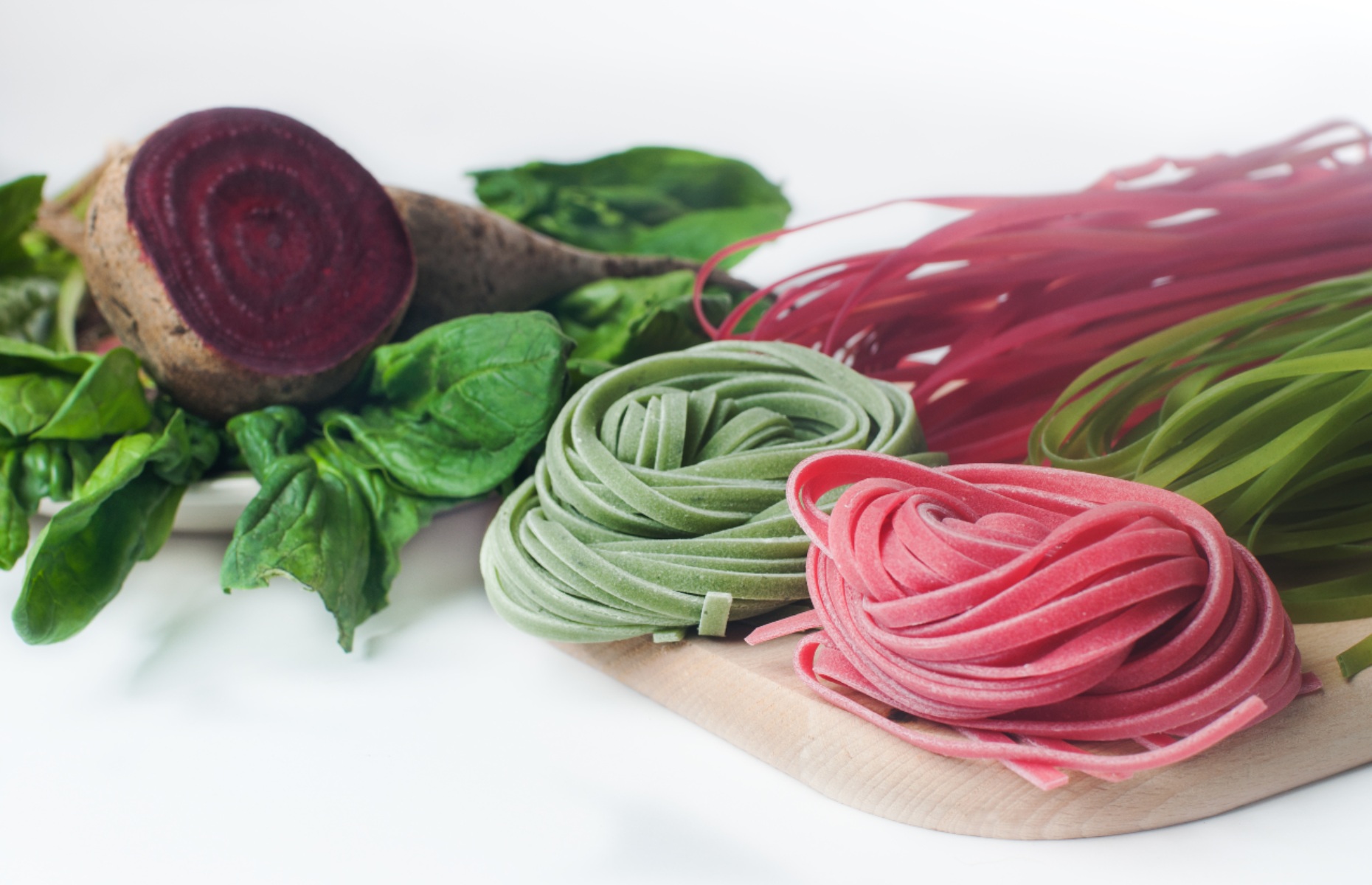 Lithiumphoto/Shutterstock
Lithiumphoto/Shutterstock
The simplest plain pasta dough uses 100g (3.5oz) of 00 flour and 1 egg per person. To bring some colour to proceedings, use 200g (7oz) flour but instead of two eggs, replace one of them with an equivalent weight (about 65g/2oz) of cooked and puréed vegetables. The most commonly used are beetroot for pink-purple pasta and spinach or herbs for green, but roast red peppers or carrots work well too, as does tomato purée.
READ MORE: How to make homemade pasta
Alternatively you can buy powdered beetroot or spinach powders in which case go with the normal egg-to-flour ratio but add a tablespoon of powder to the flour before kneading everything together. Squid ink, saffron and cocoa powder are other potential colouring agents that will make your pasta a dramatic black, sunny yellow or chocolatey brown respectively.
2. Play with patterns
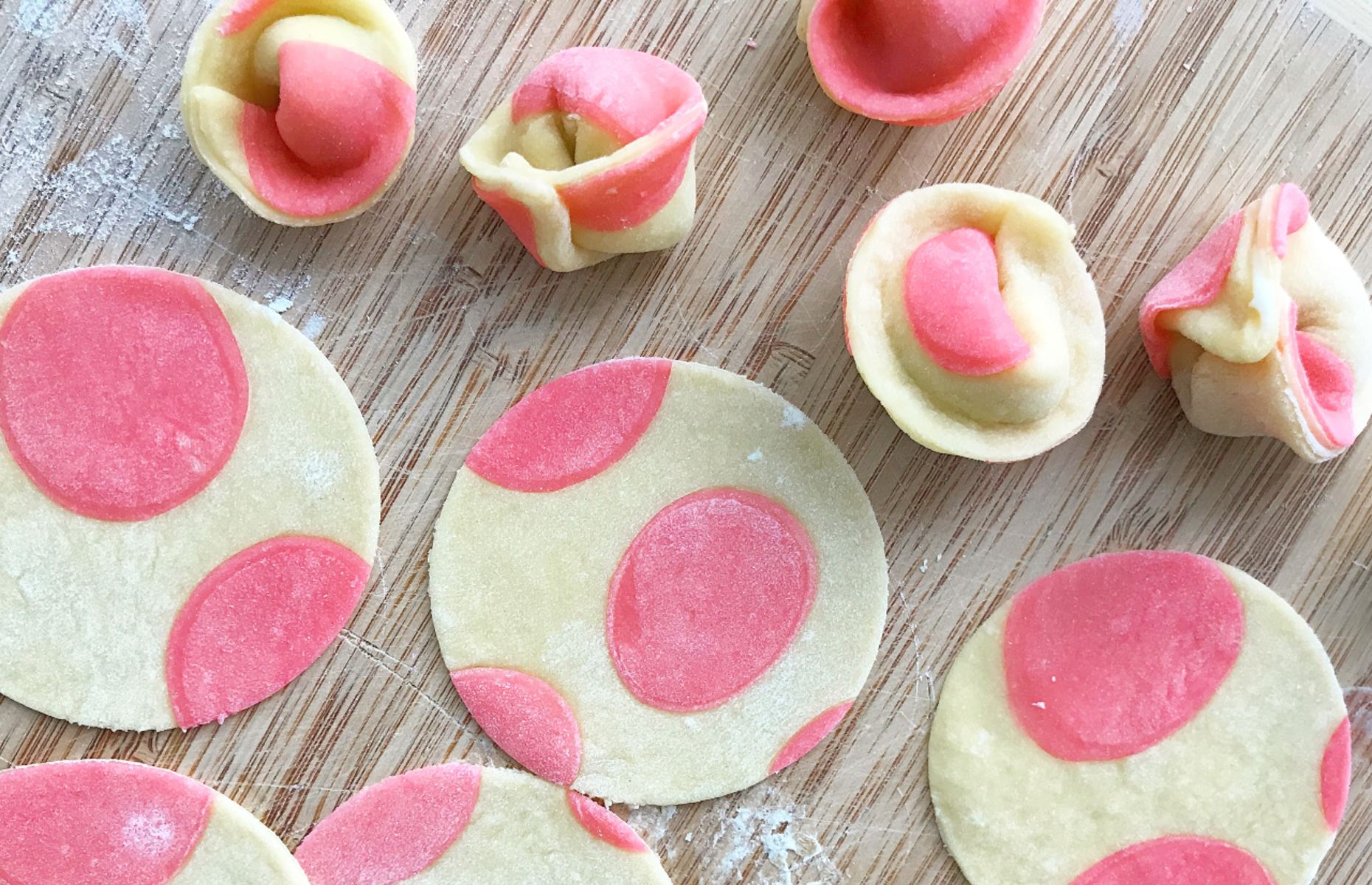 Nicole M Iizuka/Shutterstock
Nicole M Iizuka/Shutterstock
But why stop at plain coloured doughs? To create beautiful striped pasta, make one batch of plain dough and a smaller one of coloured. Roll both out to the second thinnest setting of your pasta machine then put the coloured dough through the tagliatelle attachment (or cut it into thin strips with a knife).
Lay a sheet of plain dough on your work surface and carefully place the tagliatelle on top to create stripes. If the bottom sheet is quite firm and dry, wet the strips with a fingertip dipped in water first so they stick. Press down gently to make sure they’re attached then take your pasta machine down a notch and run the whole lot through to press it together. Go up one again to bring it back to a thin sheet then use for whatever recipe you wish.
READ MORE: Our best pasta recipes
Or, if you don’t fancy stripes, go wild letting the coloured tagliatelle drop on the base sheet in whirls and wiggles for a more free form, marbled effect. Or roll tiny balls and squish them down into discs – polka dot pasta! Keep it simpler still by layering two differently coloured sheets of dough together before passing them through the rollers for two-toned pasta you can cut into pappardelle, roll into garganelli or pinch into farfalle.
3. Layer in style and flavour
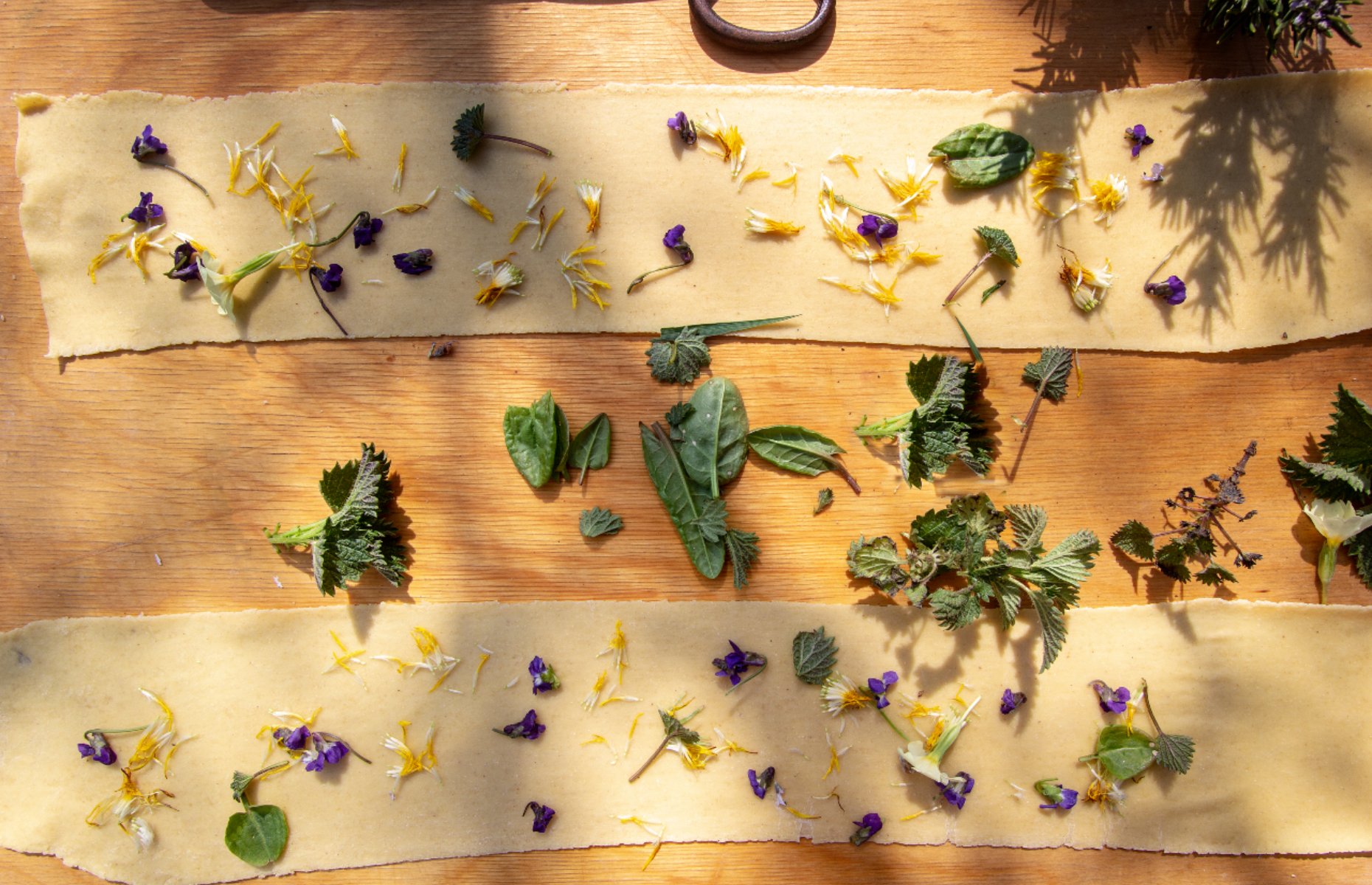 YULIYA KIRILLOVA/Shutterstock
YULIYA KIRILLOVA/Shutterstock
Another way to inject some colour into your pasta is to use herbs and edible flowers, laminating them between two sheets for a 'stained glass' effect. Roll a sheet of plain dough, taking it to the thinnest setting on your pasta machine. Then sprinkle chopped herbs over one half or carefully place whole leaves or even edible flower petals. Fold over the other half of the sheet, being careful not to trap any air bubbles. Turn the pasta machine to one or two settings wider, press down to seal then re-roll to bring it together.
If you use large leaves or petals the herbs may break or stretch but will still look beautiful. Be careful not to roll too thin or the pasta will tear over the herbs, especially over whole leaves.
Any soft herbs will work – basil, mint, tarragon , parsley, dill, chives or chervil. Some woodier herbs can work too, if you use small, thin-leafed varieties like oregano, marjoram and sage. But thyme and rosemary are usually too hard and will probably break through your dough. Making pasta like this isn’t just beautiful but adds flavour and texture too. Use your stained glass sheets in a way that shows them off: thick-cut ribbons like pappardelle or large ravioli.
4. Explore the wider world of stuffed pasta
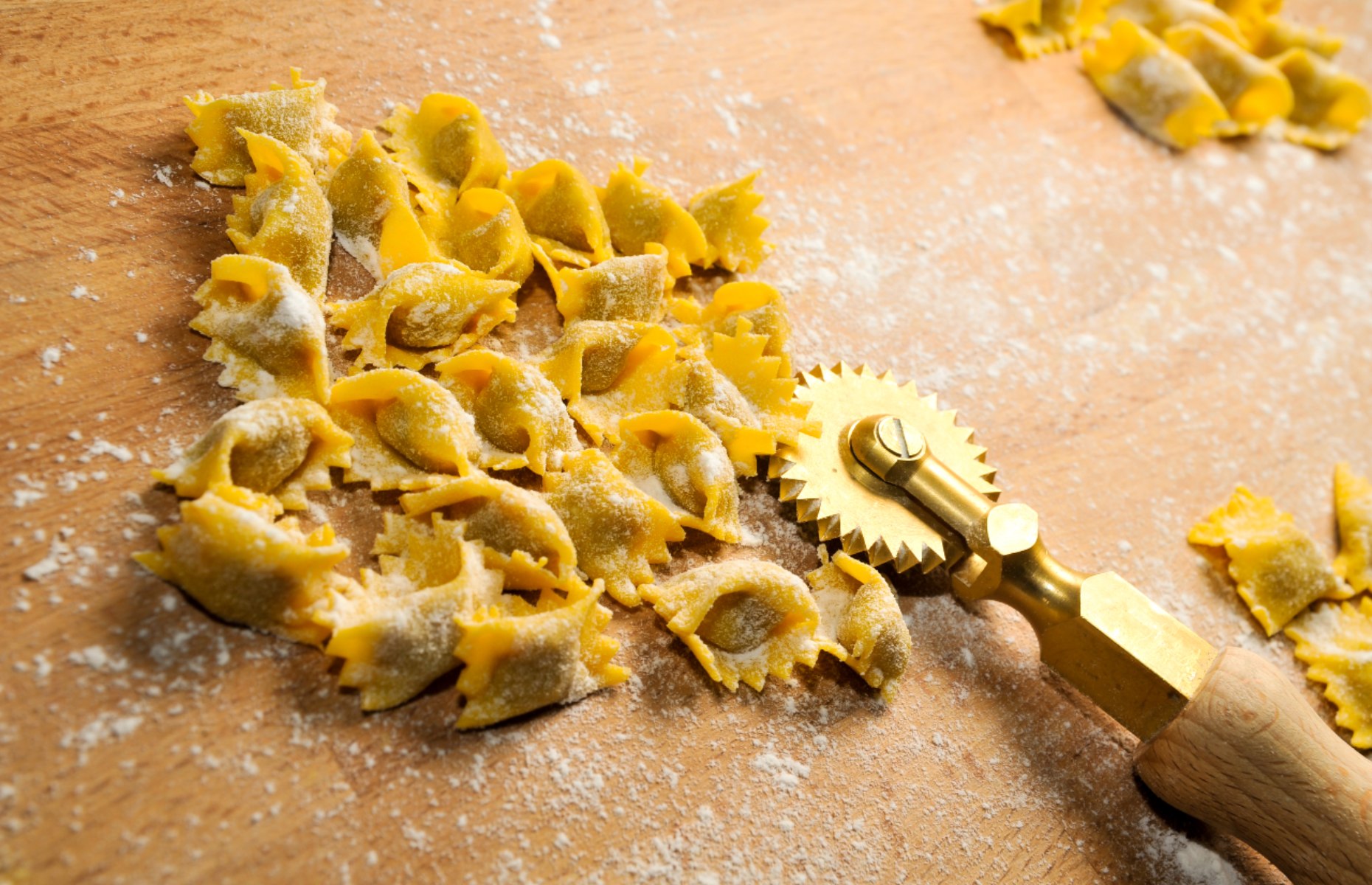 Framarzo/Shutterstock
Framarzo/Shutterstock
The first filled pasta most people learn to make is usually some variation on ravioli or tortellini. Which are both wonderful, but why not try your hand at a few lesser known shapes?
READ MORE: Learn how to make tortellini
Caramelle are adorable – so-called because they look like wrapped candies. To make them, cut your dough into rectangles, roughly 5 x 8cm (2 x 3inches). Put a spoonful of stuffing near one of the short edges and roll it over twice so it’s in the middle of an open-ended cylinder of dough. Then either pinch or twist the open ends to create the sweetie shape. These are a perfect contender to make with your striped dough.
Agnolotti are a fun variation on ravioli but contain a pocket so they catch more sauce. Cut your pasta sheet in half lengthwise then use a piping bag or a teaspoon to place small balls of filling in a row down the middle of each strip about 2.5cm (1inch) apart. Use a fingertip or pastry brush dipped in water to lightly moisten the pasta around each ball of filling then fold the pasta over the filling, pressing around each ball to seal. Trim the long edge to neaten it then fold it again over the little pillows of stuffing. Use a pasta wheel or knife to separate each pillow and pinch the edges: you should have a shape that is like a rectangular ravioli with a pocket on one side.
READ MORE: How to make bread
Or, for the truly ambitions, what about culurgiones – a Sardinian shape that look like little ears of corn and are traditionally stuffed with a mixture of cheese and mashed potato. Use a cutter to make 10cm (4inch) circles from your dough and put a tablespoon of filling in the centre of each. Take a filled circle in your hand between thumb and forefinger like a tiny taco. Pinch the end facing you then take this pinched point and press it to one side. Pinch again. Keep pinching, to one side then the other, creating a braid-like seal. Finish in a point.
5. Make ravioli al uovo for a showstopping starter
 Mikhaylovskiy/Shutterstock
Mikhaylovskiy/Shutterstock
Delicate ricotta cradles whole egg yolks encased in a silky pasta parcel – ravioli al uovo are surprisingly simple to make but will seriously impress anyone you serve them to.
To construct, make a filling of lightly seasoned ricotta and pipe rings the diameter of an egg yolk on your sheet of pasta. Carefully place a whole egg yolk into each ring and cover with a second sheet of pasta, sealing well. Use a large round cutter to separate each raviolo.
READ MORE: The perfect pasta and pasta sauce combinations
Boil them for just two or three minutes – you want the pasta to be done but the egg yolk to be perfectly runny so it oozes beautifully when cut into. Serve with a simple butter sauce and graciously accept your guests’ praise.
Lead image: Pronina Marina/Shutterstock
Clare Heal is a chef and cookery teacher based in London. She runs Sycamore Smyth, a one-woman catering company and cookery school, teaching pasta making classes amongst other things. You can follow her on Instagram at @sycamoresmyth.
Comments
Do you want to comment on this article? You need to be signed in for this feature